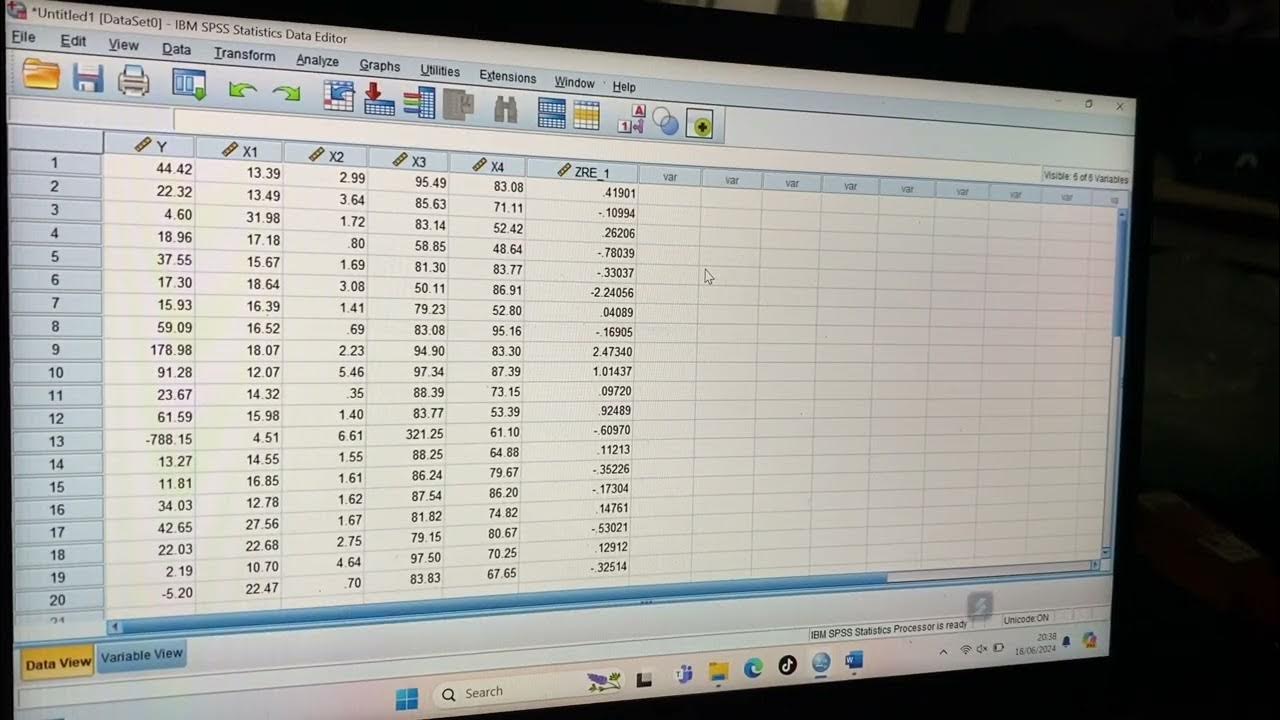PENGUJIAN AKTIVITAS ANTIOKSIDAN
Summary
TLDRThis tutorial demonstrates how to test antioxidant activity using the DPPH method. The process involves preparing a DPPH solution, ensuring it is protected from light, and creating different concentrations of the test sample. After mixing the sample with DPPH, the absorbance is measured using a spectrophotometer. The video details each step, including the preparation of controls and samples, incubation, and spectrophotometric measurement, as well as the importance of replicating each test. The final step involves calculating the IC50 value using linear regression. The tutorial emphasizes proper lab techniques and maintaining safety protocols throughout the experiment.
Takeaways
- 😀 The DPPH method is a simple and widely used test for measuring antioxidant activity.
- 😀 Ensure DPPH solution is not exposed to direct light during preparation to maintain accuracy.
- 😀 Prepare a 400 PPM DPPH solution by dissolving 10 mg of DPPH in 25 mL ethanol, and wrap the flask with aluminum foil.
- 😀 Sample solutions should be prepared in varying concentrations: 100 PPM, 50 PPM, 25 PPM, 12.5 PPM, and 6.25 PPM.
- 😀 Dilute the 100 PPM sample by pipetting 5 mL into a 10 mL volumetric flask and fill to the mark with ethanol.
- 😀 Spectrophotometry is used to measure antioxidant activity, with measurements taken at 520 nm wavelength.
- 😀 Perform an auto zero calibration with a cuvette containing only ethanol as a blank sample.
- 😀 The control sample is prepared by mixing DPPH solution with ethanol, incubated for 15 minutes before measuring absorbance.
- 😀 Samples are incubated with DPPH for 15 minutes before measuring their absorbance to analyze antioxidant effects.
- 😀 Absorbance readings should show a decrease for samples, indicating antioxidant activity compared to the control.
- 😀 Perform the test in triplicates for each sample concentration to ensure accurate and reliable results.
Q & A
What is the main topic of the experiment described in the transcript?
-The main topic is the testing of antioxidant activity using the DPPH method, which is a common approach to measure the ability of substances to neutralize free radicals.
What equipment and materials are required for the DPPH antioxidant activity test?
-The required materials include DPPH powder, the sample to be tested (e.g., chocolate or pumpkin seed oil), ethanol, a volumetric flask, cuvettes, a micropipette, and pipette tips.
What is the purpose of using aluminum foil during the preparation of the DPPH solution?
-Aluminum foil is used to wrap the volumetric flask containing the DPPH solution to prevent it from being exposed to direct light, which could affect the stability and reactivity of the solution.
How is the DPPH solution prepared in the experiment?
-The DPPH solution is prepared by dissolving 10 mg of DPPH powder in 25 mL of ethanol, and the volumetric flask is then filled to the appropriate level with ethanol.
Why is it important to perform dilution of the test samples?
-Dilution of the test samples is necessary to create a range of concentrations, allowing for the measurement of antioxidant activity at various levels and determining the effectiveness of the samples.
What are the different concentrations of the test samples used in the experiment?
-The test samples are prepared at five different concentrations: 100 ppm, 50 ppm, 25 ppm, 12.5 ppm, and 6.25 ppm.
What role does the spectrophotometer play in the experiment?
-The spectrophotometer is used to measure the absorbance of the test samples at a wavelength of 520 nm, which helps determine the antioxidant activity based on the reduction of DPPH.
What is the purpose of the 'auto zero' step in the spectrophotometry process?
-'Auto zero' is used to calibrate the spectrophotometer, ensuring that it reads the baseline absorbance of the solvent (ethanol) alone before measuring the test samples and controls.
What is the control in the DPPH test, and how is it prepared?
-The control consists of the DPPH solution mixed with ethanol, without any sample. This mixture is incubated for 15 minutes before being measured in the spectrophotometer.
Why is it necessary to repeat the measurements for each concentration multiple times?
-Repeating the measurements at least three times for each concentration ensures the reliability and accuracy of the results, allowing for more consistent and reproducible data.
Outlines

このセクションは有料ユーザー限定です。 アクセスするには、アップグレードをお願いします。
今すぐアップグレードMindmap

このセクションは有料ユーザー限定です。 アクセスするには、アップグレードをお願いします。
今すぐアップグレードKeywords

このセクションは有料ユーザー限定です。 アクセスするには、アップグレードをお願いします。
今すぐアップグレードHighlights

このセクションは有料ユーザー限定です。 アクセスするには、アップグレードをお願いします。
今すぐアップグレードTranscripts

このセクションは有料ユーザー限定です。 アクセスするには、アップグレードをお願いします。
今すぐアップグレード関連動画をさらに表示

Mengukur Antioksidan Metode DPPH

Antioxidant Assay Principle & Process (DPPH & H2O2): Dr. Bhushan P Pimple

Praktikum Mikrobiologi: Percobaan 5 (Uji Aktivitas Dilusi Cair)

Vue Unit Testing #12 - Activity form component test

Tutorial Menggunakan Spss untuk data Panel

Django Testing Tutorial with Pytest #3 - Coverage (2018)
5.0 / 5 (0 votes)
